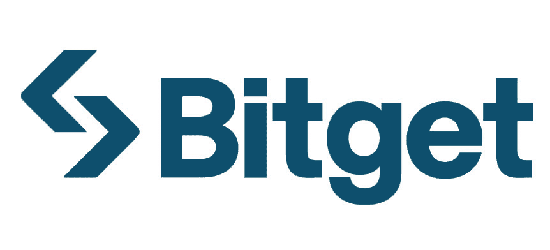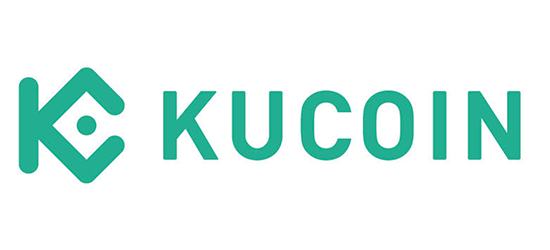
What Are Stablecoins: All You Need to Know
Learn about stablecoins, how they work, and the types available. Cryptonica provides detailed information about the most popular stablecoins, the advantages and disadvantages of stablecoins, and more.
Stablecoins are a type of cryptocurrency that has recently gained popularity. They are designed to be pegged to a certain asset, such as the US dollar or gold, in order to reduce volatility and provide an alternative form of digital currency. So if you're looking for answers on what is a stablecoin or want to learn more about them - keep reading!
What are Stablecoins?
Stablecoins are a form of cryptocurrency designed to address the inherent volatility of traditional cryptocurrencies like Bitcoin and Ethereum. Unlike these volatile digital assets, stablecoins aim to maintain a stable value by pegging their worth to an external reference, typically a fiat currency like the US dollar or a commodity like gold.
The primary goal of stablecoins is to provide the benefits of cryptocurrencies, such as fast and secure transactions, while minimizing the price fluctuations that can make them unreliable as a medium of exchange or store of value. By pegging their value to a stable asset, stablecoins aim to provide stability and predictability, making them more suitable for everyday transactions, remittances, and financial applications.
How it works
Stablecoins are typically created on a blockchain platform and usually adopt the same features as other cryptocurrencies, such as decentralization, immutability, and high security. The main difference between stablecoins and other cryptocurrencies is that the value of a stablecoin is pegged to an external reference point.
To achieve this, most stablecoin issuers employ a collateralized system where the cryptocurrency is backed by a reserve asset held in reserves. This reserve asset can be anything from fiat currencies like US dollars to commodities like gold or other cryptocurrencies. When users transfer stablecoins, they exchange a digital asset backed by a real-world asset held in reserves.
Why are Stablecoins so Important?
Bitcoin and other major cryptocurrencies have seen incredible gains over the past few years. However, these digital assets remain highly volatile due to their limited supply and unpredictable market sentiment.
Furthermore, stablecoins are a bridge between traditional fiat currencies and digital assets. They can be used to send cross-border payments quickly, securely, and without the need for bank accounts or financial intermediaries. Stablecoins also enable access to DeFi (decentralized finance) services that are otherwise unavailable in traditional banking systems.
Finally, the mailability and digital nature of stablecoins enable new forms of financial products and services that are not possible with fiat currencies. For example, stablecoins can be used for programmable money, allowing users to automate payments, link multiple accounts and currencies, or even pay out dividends.
What Kinds of Stablecoins Are There?
There are different types of stablecoins, each with its own mechanism to maintain price stability. Some stablecoins are backed by reserves of the underlying asset, such as holding an equivalent amount of US dollars in a bank account for every stablecoin in circulation. Others rely on algorithms and smart contracts to regulate the supply and demand of the stablecoin and ensure its value remains stable.
Fiat-Collateralized Stablecoins
Fiat-Collateralized Stablecoins are the most common type of stablecoin. They are backed by reserves of fiat currencies, such as the US dollar, and therefore maintain a one-to-one ratio with the underlying asset. For example, if a US dollar stablecoin is in circulation, it would be backed by one US dollar in a bank account. This type of stablecoin provides stability and reliability, but it also introduces the need for trust between users and third parties that are responsible for managing the reserves.
Cryptocurrency-Collateralized Stablecoins
Reserves of another cryptocurrency, such as Ethereum or Bitcoin-backed cryptocurrency-collateralized stablecoins. These digital assets are used to back the value of the stablecoin and ensure that its price remains stable. This type of stablecoin offers a higher level of decentralization than fiat-collateralized coins, as it does not rely on third parties to manage the reserves. However, it also introduces additional risk due to the underlying asset's volatility.
Commodity-Collateralized Stablecoins
Commodity-Collateralized Stablecoins are backed by reserves of commodities, such as gold or silver, which are used to maintain the stability of the stablecoin. This type of stablecoin can provide additional safety and security as the underlying asset is physical and less prone to external factors. However, these stablecoins also require trust, relying on third parties to manage the reserves.
Algorithmic Stablecoins
Algorithms rather than real assets back algorithmic stablecoins. They use smart contracts and automated protocols to regulate the supply of the stablecoin and maintain its price stability. This stablecoin type is decentralized and not pegged to any real-world asset. Algorithmic stablecoins are seen as an alternative to fiat-backed stablecoins as they provide a more cost-effective way of maintaining price stability. The most popular algorithmic stablecoin is MakerDAO, which uses an Ethereum-based protocol to issue and manage a token called the DAI.
What are the Most Popular Stablecoins?
The most popular stablecoins are Tether (USDT), USD Coin (USDC), and Dai (DAI). Here is a brief overview of each:

Source and Copyright © Tether
Tether
Tether is a stablecoin that was launched in 2014 with the goal of providing stability and convenience by pegging its value to the US dollar. It operates on the blockchain technology of other cryptocurrencies, primarily the Ethereum network, and uses a system called "tokenization" to maintain a 1:1 ratio between its tokens (USDT) and the US dollar. While it has faced some controversies and regulatory scrutiny regarding its reserves and transparency, Tether remains one of the most widely used stablecoins in the cryptocurrency market, serving as a popular choice for traders, investors, and exchanges.

Source and Copyright © Circle
USD Coin
USD Coin (USDC) is a fiat-backed stablecoin launched by the Centre Consortium, a joint venture between Coinbase and Circle. It is backed 1:1 to the US dollar and has been audited to ensure its reserves are properly managed. USDC is compatible with Ethereum and other modern blockchains, and it has seen rapid adoption in recent years as a reliable form of digital currency. USDC is open-source and free to use, making it an attractive option for many users.

Source and Copyright © MakerDao
Dai
Dai is an algorithmic stablecoin that was launched in 2015 by MakerDAO. Unlike other fiat-backed stablecoins, it is not backed by any real asset and instead relies on smart contracts to maintain its price stability. Dai is a fully decentralized cryptocurrency that operates on the Ethereum blockchain and is designed to be used as a medium of exchange, allowing users to send payments quickly and securely without the need for bank accounts or financial intermediaries. Additionally, it can be used to access DeFi services that are otherwise unavailable in traditional banking systems.
Note: There are many other popular cryptocurrencies, including Binance USD (BUSD), TrueUSD (TUSD), and Paxos Standard (PAX), which are all pegged to the US dollar and offer similar features. Each of these stablecoins has its own advantages and disadvantages, so users should research and choose the one that best suits their needs.
Advantages of Stablecoins
Stablecoins offer several advantages over other forms of digital currencies.
- Price Stability: Stablecoins are designed to maintain a consistent price no matter the market conditions, making them an attractive choice for traders and investors. This helps protect users from the volatility of other cryptocurrencies, such as Bitcoin, which can experience significant price swings in just a few minutes.
- Greater Accessibility: Stablecoins allow users to access the cryptocurrency market more easily, as they do not need to deal with complicated exchanges or worry about price fluctuations. This makes them particularly attractive to those who wish to use cryptocurrencies for payments or remittances.
- Decentralization: Some stablecoins are fully decentralized and do not rely on any third parties or intermediaries. This gives users greater control over their funds and allows them to take advantage of the benefits of cryptocurrencies without the risk of price volatility.
- Lower Fees: Since stablecoins are not subject to the same level of volatility as other cryptocurrencies, they tend to have lower transaction fees than traditional payment networks. Additionally, many stablecoin transactions do not require additional fees or gas costs, making them more cost-effective for users.
- Faster Transactions: Stablecoins are able to take advantage of the speed and security of blockchain technology, allowing for faster payments and lower risk.
Disadvantages of Stablecoins
Despite their many advantages, stablecoins also have some drawbacks that users should be aware of before investing.
- High Entry Cost: Some stablecoin projects require a significant amount of capital to enter, which makes them inaccessible to many users. Additionally, since real assets back them, there is a risk of losses if the asset does not appreciate in value.
- Lack of Regulation: Since stablecoins are decentralized and often operate outside traditional banking systems, they may be subject to fewer regulations than other forms of digital currency. This means that users need to be extra vigilant when using them, as they do not have the same level of protection as traditional currencies.
- Counterparty Risk: With some stablecoins, users can be exposed to counterparty risk if the issuer does not properly manage or secure its reserves. As such, it is important to research and understand the project before investing in any stablecoin.
- Ponzi Schemes: As with any new technology, there is a risk that some stablecoin projects may be fraudulent or Ponzi schemes.
Note: Anyhow, there are plenty of advantages and disadvantages for stablecoins, but it is important to consider all the factors before investing or using any form of cryptocurrency.
Stablecoin Regulation
Regulators are intensifying their scrutiny of stablecoins due to the rapid expansion of the $130 billion market, raising concerns about their potential impact on the overall financial system. In October 2021, the International Organization of Securities Commissions (IOSCO) recommended that stablecoins be subjected to regulations akin to financial market infrastructure alongside payment systems and clearinghouses. The proposed regulations primarily target stablecoins that regulators consider systemically important, as they possess the capacity to disrupt payment and settlement transactions. Additionally, politicians are increasingly advocating for stricter oversight of stablecoins. For instance, Senator Cynthia Lummis (R-Wyoming) called for routine audits of stablecoin issuers in September 2021, while others support implementing regulations similar to those imposed on traditional banks within the sector.
Furthermore, Stablecoins, like other cryptocurrencies, are subject to a range of regulations depending on the jurisdiction. In the US, the SEC has issued guidelines for digital asset projects that want to issue stablecoins, and some countries have even created their own regulatory frameworks for them. Additionally, many exchanges require users to comply with anti-money laundering (AML) and know-your-customer (KYC) protocols when trading stablecoins.
Finally, as the cryptocurrency industry grows and matures, regulators will likely increase their oversight of the sector to protect consumers. As such, users should research and understand the regulations that apply before investing or using any form of digital currency.
The Future of Stablecoins
The rise of stablecoins in recent years is a testament to their potential as an alternative form of digital currency. Not only do they offer the benefits of crypto, such as security and decentralization, but they also provide a way for users to access DeFi services without the risk of price fluctuations or relying on financial intermediaries.
Moreover, the increasing scrutiny and regulation of stablecoins could provide greater confidence and trust in the sector, which may result in more widespread adoption. Additionally, the increased involvement of governments and central banks is likely to spur further innovation within the space, as they are exploring ways to utilize stablecoins for various applications such as payments and remittances.
Ultimately, it is clear that stablecoins have a bright future ahead of them. As users become more familiar with the concept and understand the benefits, they are likely to continue their rise in popularity as an alternative form of digital currency.
Bottom Line
Stablecoins are a new and emerging form of cryptocurrency that has the potential to revolutionize the way we use money. They offer the same benefits as other cryptocurrencies, such as security and decentralization, while also providing users with the stability of traditional assets. Furthermore, increased involvement from governments and legal authorities has led to greater scrutiny and regulation, which may provide further confidence in the sector. Ultimately, it is clear that stablecoins have a bright future ahead of them and may become an important part of the global financial system in the years to come.
Frequently Asked Questions
What Is the Purpose of Stablecoin?
The purpose of a stablecoin is to provide users with the benefits of crypto (security and decentralization) while also providing them with the stability of traditional assets, such as fiat currencies.
Which Is the Best Stablecoin?
The best stablecoin will depend on individual needs and preferences. However, some of the most popular stablecoins include Tether (USDT), USDC, DAI, and Binance USD (BUSD). Moreover, users should research and understand the project before investing in any stablecoins.
Do stablecoins have any drawbacks?
Stablecoins do have some drawbacks, such as counterparty risk if the issuer does not properly manage their reserves and the lack of regulations compared to traditional currencies. There is also the risk that some stablecoin projects may be fraudulent or Ponzi schemes. Users should research and understand the project before investing in any stablecoin.
Why have stablecoins become so popular?
Stablecoins have become increasingly popular as they provide a way to transact without the volatility of other cryptocurrencies like Bitcoin and Ethereum. Additionally, they can act as a hedge against the volatility of other cryptocurrencies and provide an alternative form of digital currency. Lastly, they also offer access to global markets with much lower transaction fees compared to traditional payment methods. Ultimately, stablecoins offer a combination of features that have made them an attractive alternative to traditional currencies and digital assets.






























